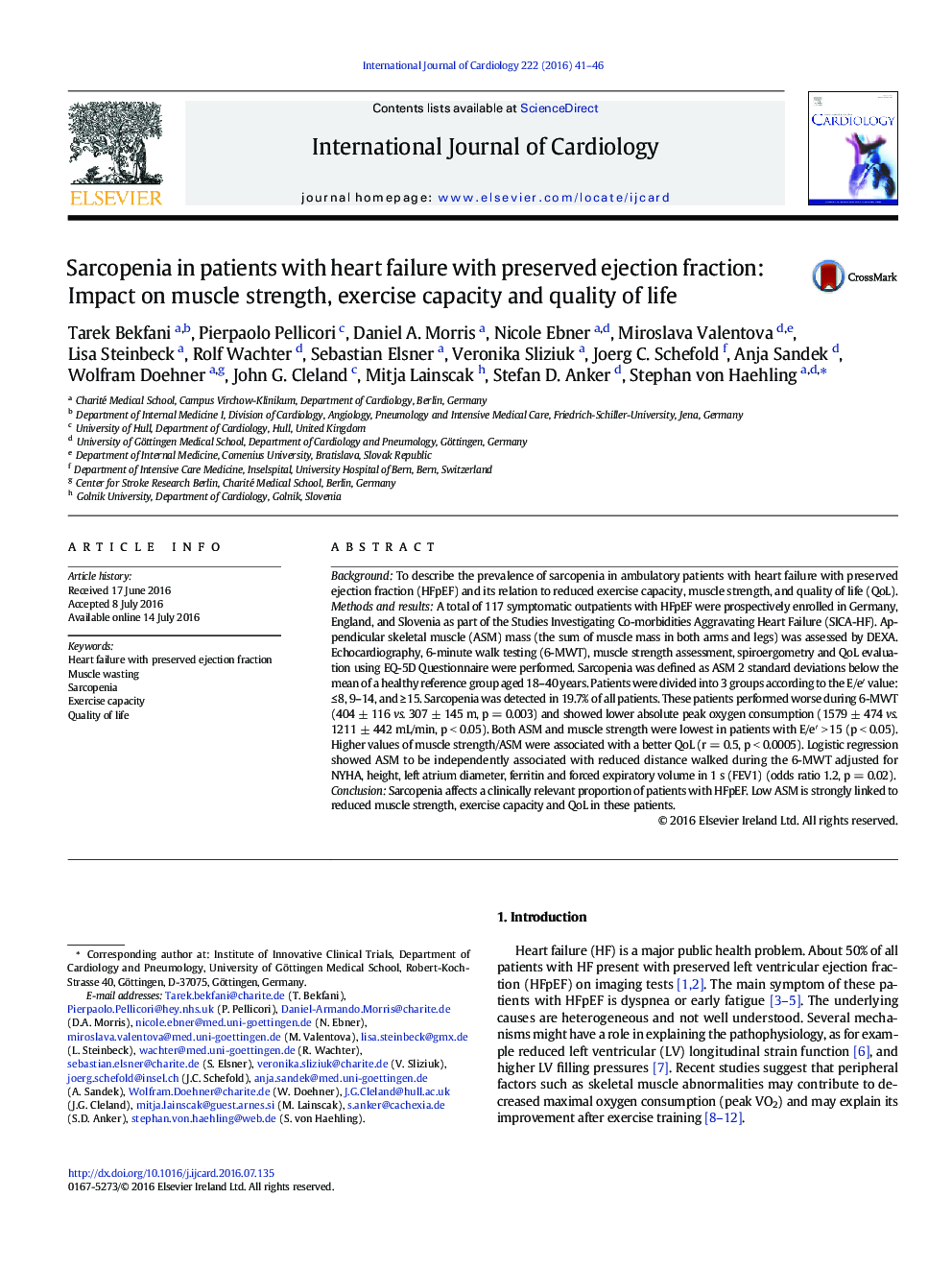| Article ID | Journal | Published Year | Pages | File Type |
|---|---|---|---|---|
| 5962588 | International Journal of Cardiology | 2016 | 6 Pages |
BackgroundTo describe the prevalence of sarcopenia in ambulatory patients with heart failure with preserved ejection fraction (HFpEF) and its relation to reduced exercise capacity, muscle strength, and quality of life (QoL).Methods and resultsA total of 117 symptomatic outpatients with HFpEF were prospectively enrolled in Germany, England, and Slovenia as part of the Studies Investigating Co-morbidities Aggravating Heart Failure (SICA-HF). Appendicular skeletal muscle (ASM) mass (the sum of muscle mass in both arms and legs) was assessed by DEXA. Echocardiography, 6-minute walk testing (6-MWT), muscle strength assessment, spiroergometry and QoL evaluation using EQ-5D Questionnaire were performed. Sarcopenia was defined as ASM 2 standard deviations below the mean of a healthy reference group aged 18-40 years. Patients were divided into 3 groups according to the E/eâ² value: â¤Â 8, 9-14, and â¥Â 15. Sarcopenia was detected in 19.7% of all patients. These patients performed worse during 6-MWT (404 ± 116 vs. 307 ± 145 m, p = 0.003) and showed lower absolute peak oxygen consumption (1579 ± 474 vs. 1211 ± 442 mL/min, p < 0.05). Both ASM and muscle strength were lowest in patients with E/eâ² > 15 (p < 0.05). Higher values of muscle strength/ASM were associated with a better QoL (r = 0.5, p < 0.0005). Logistic regression showed ASM to be independently associated with reduced distance walked during the 6-MWT adjusted for NYHA, height, left atrium diameter, ferritin and forced expiratory volume in 1 s (FEV1) (odds ratio 1.2, p = 0.02).ConclusionSarcopenia affects a clinically relevant proportion of patients with HFpEF. Low ASM is strongly linked to reduced muscle strength, exercise capacity and QoL in these patients.
